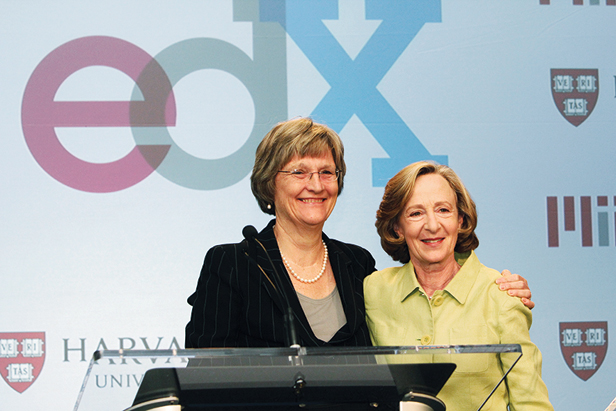MIT and Harvard Launch edX

In the early days of MIT, several attempts to merge the Institute with its neighbor up the river famously fell through. This spring, however, MIT and Harvard announced that they will join forces in an ambitious new partnership to deliver online education to learners anywhere in the world.
The new venture, called edX, will provide interactive classes from both universities—free—to anyone with an Internet connection. But a key goal of the project, Harvard president Drew Faust said, is “to enhance the educational experience of students who study in our classrooms and laboratories.”
MIT president Susan Hockfield described edX as a “shared expedition to explore the frontiers of digital education.” The technological platform recently established by MITx, which will be the foundation for the new learning system, offers video lesson segments, embedded quizzes, immediate feedback, student-ranked questions and answers, online labs, and student-paced learning. Certificates of mastery will be available for those who demonstrate knowledge of the material.
The online tools developed for edX will also supplement the lectures, seminars, and labs available to MIT’s and Harvard’s own students and will provide detailed data about how well different parts of lessons are understood and what areas may require further explanation. “Online education is not an enemy of residential education,” Hockfield said, “but, rather, an inspiring and liberating ally.”
EdX president Anant Agarwal, the former director of CSAIL, said edX will be “disruptive” and will “completely change the world.”
MIT and Harvard will offer their first edX courses this fall; over time, they expect other universities to join them in offering courses on the edX platform, which will also be released as open-source software.
EdX is “genuinely an experiment,” Hockfield said, “and we ourselves are prepared to learn.”
Keep Reading
Most Popular
Large language models can do jaw-dropping things. But nobody knows exactly why.
And that's a problem. Figuring it out is one of the biggest scientific puzzles of our time and a crucial step towards controlling more powerful future models.
The problem with plug-in hybrids? Their drivers.
Plug-in hybrids are often sold as a transition to EVs, but new data from Europe shows we’re still underestimating the emissions they produce.
Google DeepMind’s new generative model makes Super Mario–like games from scratch
Genie learns how to control games by watching hours and hours of video. It could help train next-gen robots too.
How scientists traced a mysterious covid case back to six toilets
When wastewater surveillance turns into a hunt for a single infected individual, the ethics get tricky.
Stay connected
Get the latest updates from
MIT Technology Review
Discover special offers, top stories, upcoming events, and more.